This article was republished with permission from WTOP’s news partners at Maryland Matters. Sign up for Maryland Matters’ free email subscription today.
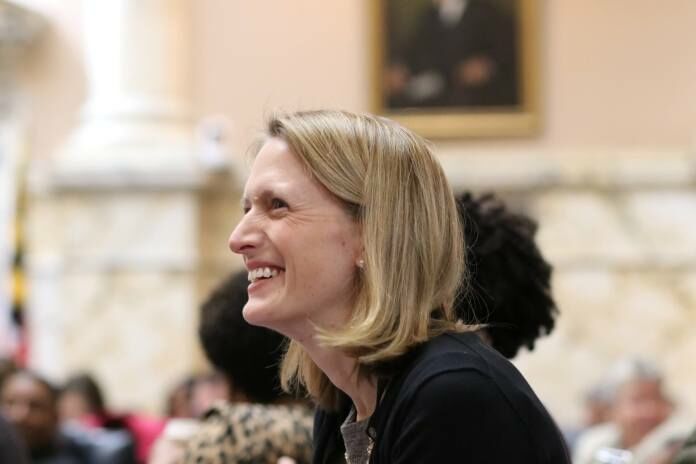
This content was republished with permission from WTOP’s news partners at Maryland Matters. Sign up for Maryland Matters’ free email subscription today.
At first glance, the picture for women seeking high office in Maryland looks grim:
There are no Democratic women running for governor in 2022. The state’s congressional delegation, once dominated by trailblazing Sen. Barbara A. Mikulski (D), has been all-male since Mikulski and former Rep. Donna Edwards (D) left office at the end of 2016. And women traditionally have been even more under-represented in Maryland’s top executive posts than in Congress.
As candidates continue to announce bids for statewide and countywide jobs and for congressional seats in 2022, the imbalance between men and women running for high office in Maryland becomes more conspicuous.
Last month, Maryland Commerce Secretary Kelly M. Schulz announced she would seek the Republican nomination for governor. In December, Brooke E. Lierman, a Democratic delegate from Baltimore City, threw her hat into the ring to run for state comptroller.

The comptroller serves as the state’s chief financial officer and has one of the three votes on the influential Board of Public Works. There has never been a female governor or state comptroller in Maryland’s history. A woman has never served as state attorney general, either.
There are currently eight women governors — five Democrats and three Republicans — in Alabama, Iowa, Michigan, Kansas, Maine, New Mexico, Oregon and South Dakota, according to the Center for American Women and Politics at Rutgers University.
Nancy K. Kopp (D) is the second woman to hold the position of Maryland State Treasurer, a position that is chosen by the legislature, not directly by voters. In 1994, Kathleen Kennedy Townsend (D) was elected as lieutenant governor, the first and only woman to hold the position, and unsuccessfully ran for governor in 2002. Lieutenant governors in Maryland aren’t elected independently; they are chosen by and attached to specific gubernatorial candidates.
On the congressional front, Heather R. Mizeur, a former Democratic state delegate, announced in January that she will challenge U.S. Rep. Andrew P. Harris, the only Republican in the state’s congressional delegation, in 2022.
Mizeur’s candidacy has generated enthusiasm among progressive activists. But because the 1st District is packed with Republican voters, whose numbers may even increase after the upcoming round of redistricting, Mizeur remains “a long shot,” said Melissa Deckman, chair and professor of political science at Washington College.
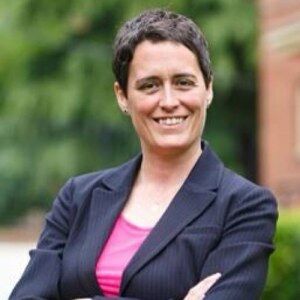
Many Democrats see Prince George’s County Executive Angela D. Alsobrooks as a rising star and viable Democratic candidate for governor. Alsobrooks said in a recent radio interview that she was running for re-election for county executive, but The Washington Post reported earlier this month that she is still considering running for governor in 2022.
After 2018 was coined the “Year of the Woman” because of the record-breaking number of women candidates who won congressional seats, and after Kamala Harris made history by being elected the first woman as vice president in 2020, it seems surprising that more women aren’t vying for higher political office in a blue state like Maryland.
But female leaders in the state and organizers of Emerge Maryland, an organization dedicated to electing more Democratic women to public office, do not take this as a bad omen. The reason there are not more women running for higher office is more a matter of timing rather than a lack of talent, and there are bound to be more prominent female faces in the next election cycle, they say.
“We’re doing the work; we just have to have our big breakthrough,” Martha McKenna, a Democratic media strategist and chair of Emerge Maryland said. “I think the next five years are going to be tremendously exciting.”
Why don’t current female leaders run for office?
The record surge of women elected to Congress and state legislatures in 2018 probably prompted some Republicans, whose party has been branded as anti-women, to rethink their strategy, and that’s why Schulz, a formidable Republican woman, has come forward, Deckman said.
But the fact that there are no women running for governor on the Democratic side is not indicative of a lack of potential candidates — it’s more “circumstantial,” McKenna said. It is not about one individual race, but about building a bench of Democratic women and giving them the tools to run for office if they choose to, she continued.
It is not uncommon for county executives and members of Congress to run for governor, but men largely hold those positions right now, impeding the ability of women to rise as gubernatorial candidates on the Democratic side, Deckman said.
And prominent women leaders in the state have indicated a preference for staying in local government, at least for now.

Frederick County Executive Jan Gardner (D) said she has not decided what she is doing after she is termed out of office in 2022, but has enjoyed working locally.
“When people say higher office, I always think local government is the highest office because you get to make the most impact on the people that you serve day-to-day,” Gardner said.
Marilyn J. Mosby (D), the state’s attorney for Baltimore City, and Aisha N. Braveboy (D), the state’s attorney for Prince George’s County, both told Maryland Matters that they plan to stay in their current positions, expressing the belief that they are making an impact where they are now and want to continue that work locally.
“There’s so much more work to do in the criminal justice system, especially here in Baltimore City, and that’s my priority,” Mosby said. As a Black woman prosecutor of a major municipality representing a slim percentage of all elected prosecutors in the country, Mosby said she feels like she is already making a difference, although that path has been “incredibly isolating.”
Braveboy said she’s running for re-election in 2022 and referenced her work reforming policies that sentence juveniles to life in prison and address hate crimes — reforms she hopes to continue to pursue in a second term.
Although well-qualified women who could be very competitive in a gubernatorial race in 2022 are out there, “women are making those decisions [not to run] for themselves,” Braveboy said. “I don’t think we have to run for any particular office just because we can.”
Braveboy pointed to House Speaker Adrienne A. Jones (D-Baltimore County), the first Black woman presiding officer in the Maryland General Assembly, who pushed historic police reform legislation this year. “She doesn’t have to be governor to make significant changes that we needed to make on police reform — she led the charge. That’s power!” Braveboy said.
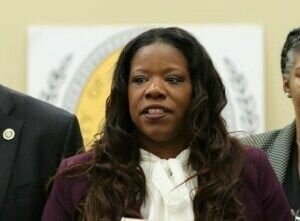
Maryland is one of just five states in the country that has state legislative elections every four years, instead of every two years. And Maryland is unique in that races for county seats line up with gubernatorial election years, which may make it more likely for incumbents to run for re-election rather than seek higher political office.
“We’re kind of like the cicadas — you can time us every four years,” said Diane Fink, executive director of Emerge Maryland. “It all comes out, and it’s a big free for all.”
Since 1941, Maryland has elected nine women — six Democrats and three Republicans — to Congress, according to the Center for American Women and Politics. In the early 1990s, four of the state’s 10 members of Congress were women. In 2021, women comprised 41% of the state legislature, a percentage that has been steadily increasing in recent years, according to the same database.
Maryland was on a trajectory of losing women in elected office starting 2007, as more women retired before others stepped forward to replace them, according to Fink. For instance, the portion of women in the Maryland General Assembly dipped from 36% to 32% in 2007 and hovered just above 30% until the late 2010s.
Emerge Maryland, which launched 10 years ago, has helped expand the pipeline of Democratic women to elected offices, beginning with getting 23 women on ballots in 2014. In 2018, Emerge Maryland got 46 women on ballots and the group expects to see around 70 women running for state or local offices in the 2022 election cycle.
“The fact is that right now, we don’t see [more women running for higher office] — that is true, but the base of Maryland politics is changing, and it’s not going back. We’ve only been moving forward since [Emerge Maryland] started,” Fink said.
“This train has left the station, and whether it’s going to be Democratic women or Republican women, it’s going to happen,” she continued.
And since most of members of Congress come through the state legislature, it is still critical that women continue to win those State House races.
Disadvantages for women candidates
Krishanti Vignarajah, a former policy adviser to Michelle Obama, was the only female candidate on the ballot for Maryland’s 2018 Democratic primary for governor and finished fourth, with 8.2% of the vote.
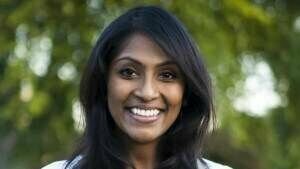
“It felt lonely at times,” Vignarajah said. “In political debates, there was always a line to the men’s bathrooms.”
The truth is that the current rules of the game disfavor women, she said.
Women in Maryland and across the country still lack the well-heeled financial networks of male candidates,” she continued. “From my personal experience, when you’re running a statewide office, money is king.”
Vignarajah was outspent by most of her male opponents.
Although raising money has been a barrier for women candidates in the past, women raised more than men on average during the 2020 congressional races and almost matched fundraising by men in state-level races, according to the Center for Responsive Politics.
Democratic women running for House seats raised $1.4 million on average, compared to the $819,000 for Democratic men. On the other hand, Republican women raised $816,000 on average while Republican men raised $876,000.
Women contending for U.S. Senate seats raised $6.2 million on average compared to $5.8 million for men. Democratic men outraised Democratic women by $1.8 million. Republican women outraised Republican men by $4.5 million.
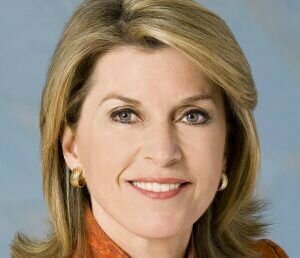
Campaign finance reform that precludes people being outmatched by personally wealthy candidates would help level the playing field for women, said Kathleen Matthews, who chaired the Maryland Democratic Party from 2017 to 2019 and was a candidate in the 2016 primary election for the state’s 8th congressional district seat. She said it is harder to ask people for money as a woman.
In 2010, the Supreme Court ruled in Citizens United v. Federal Election Commission overturned campaign finance restrictions and allowed corporations and other outside groups to spend unlimited money on elections, under the First Amendment.
“We’ve got to put our money where our mouth is,” Vignarajah said
Women are also more risk-averse and feel like they have to check all the boxes before running for highly competitive seats, Matthews said. “Men look at all the reasons why they can win whereas women look at the reasons why they might lose.”
Since members of Congress can always run for re-election, there is an advantage to incumbency, Deckman said. Currently, there are seven Democratic members in the House from Maryland and two in the Senate — all male — and none have indicated that they plan to leave office any time soon, making it difficult to recruit women to run against a popular incumbent, she continued.
Having women ready to capitalize on those rare open seats will be key, Deckman said.
U.S. Rep. David J. Trone (D) announced last week that he will seek a third term in the U.S. House of Representatives and not run for governor next year.
Aruna Miller, a former state delegate, has been raising money for a second congressional bid in case Trone decided to run for governor in 2022. She finished second to Trone in the 2018 Democratic primary.
In an interview with Maryland Matters before Trone’s announcement, Miller said that she has been asked if she was going to run for governor but is most interested in serving in the federal delegation.
Building the bench is the best way to get more women to higher office, Miller said. “You can’t just wake up one day and say ‘Hey, I’m going to run for governor.’”
But not all agree about the wisdom of waiting to build a stronger pipeline of women in political office. Vignarajah, who was encouraged to run for a lower office in 2018, said she is tired of the perception that women must wait their turn. “I think, in some ways, Maryland’s Democratic Party reflects an incremental approach — that there’s a glass ceiling of sorts.”
“I’m sick of being told to wait our turn; the future is female and that future is now,” she added.
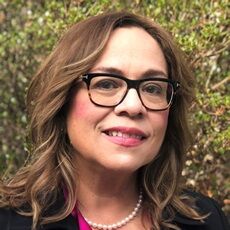
Nancy Navarro (D), the only woman on the Montgomery County Council, said the conventional road to higher office needs to be “reimagined.” Shifting the perception that people need to be well connected or check certain boxes before running for higher office will give more women, especially those from immigrant communities, an opportunity to step up.
The lack of female candidates vying for those political seats remains a “conundrum,” Matthews said, but there is still time to see more women announce plans to run for higher office in 2022.
“I think it’s important to recognize that the field is not yet defined, and there may be some women who will enter the race,” Gardner echoed. “It’s difficult to really come to one conclusion as to why we don’t have more women running statewide or in our congressional districts. It may be a matter of the circumstance of the day.”
She added: “If women don’t run, women can’t win.”







